Renal Diet Grocery List
If you’ve been diagnosed with CKD or chronic kidney disease, your doctor or renal dietitian may have suggested a renal diet. So, what is a renal diet and what's on the renal diet food list? What can you eat? And are there any foods you can’t eat?
Shopping for groceries can be a daunting task, especially when you are on a renal diet. However, with the right guidance and understanding of what your body needs, it doesn't have to be overwhelming. There are many benefits of a renal diet and we're about to show you those benefits.
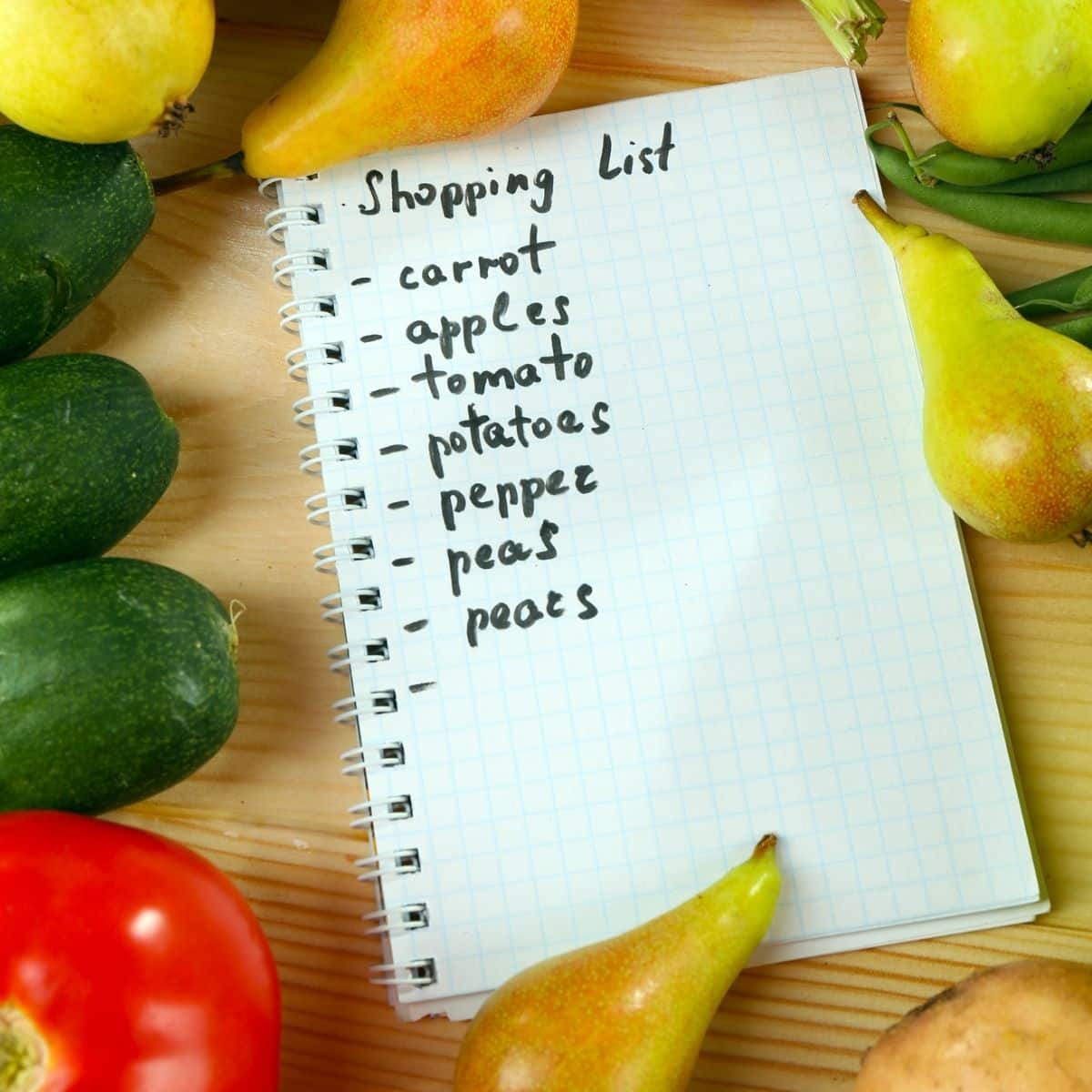
Think of a grocery shopping trip as an adventure, where you explore the different flavors and nutrients that make up a balanced diet.
With this in mind, let us take a journey through the renal diet grocery list and learn how to nourish our bodies while still enjoying food and plus this CKD grocery list.
Jump to:
- Overview
- Basic Guidelines For Your Renal Diet Grocery List
- Healthy Protein Sources
- Fruits and Vegetables
- Grains and Dairy
- Processed Foods
- Spices and Salt
- Potassium Balance
- 5 Things That Should Be On Your Renal Diet Grocery List
- Frequently Asked Questions
- Get On Track With Your Renal Diet, Starting With A Kidney Friendly Grocery List
Overview
Eating healthily is important for everyone, and having a specialized grocery list tailored to your individual needs can make it easier to stay on track! A renal diet should be individualized based on lab values, stage of kidney disease, and medical history.
First, let’s make sure our terminology is clear. Your renal system includes your kidneys, ureters, bladder, and the urethra. It’s the system that filters and eliminates waste from your body. It also regulates blood pressure, blood volume, electrolytes, and some metabolic and hormone regulation.
Your kidneys are an essential part of your renal system. When talking about a renal diet, most often people with kidney disease are using it interchangeably with a kidney friendly diet.
In looking at foods and nutrients that support kidney health, you want to consider foods that are generally low in salt, potassium, and phosphorus. If your kidney disease is advanced, then you may be looking at increasing your protein and staying within your fluid goals if you’re on dialysis.
Working with a renal dietitian will help you understand the importance of each item and allow you to create an individualized plan.
When creating a renal diet grocery list, it's important to focus on carbohydrates that provide your body with energy while controlling blood sugar levels. Complex carbs like whole grains, starches, and fiber help improve digestive health and lower blood sugar levels.
Protein is essential for cell growth and maintenance as well as immunity, however, too much can put strain on the kidneys, so it's best not to overdo it. This is especially true for those in on CKD non-dialysis diets.
Fats are also an important part of a healthy diet; they help absorb fat-soluble vitamins, but saturated and trans fats should be avoided or limited in the diet.
Potassium must be limited for people with CKD. Fresh vegetables and fruits are great kidney-friendly options as they provide an abundance of nutrients. They typically have low phosphorus levels, but some types may be high in potassium.
On the other hand, fresh fruits and vegetables are also typically low in phosphorus which may be beneficial in CKD as high phosphates are found in processed foods. Should you do fresh or canned vegetables for a renal diet?
Portion control along with healthy exercise are necessary components for maintaining weight according to individual needs. This is where working with a registered clinic dietitian nutritionist really comes into play since they can provide recommendations tailored specifically for your body type and current disease state.
For More Recipes and Ideas --->> Get Your Free Meals and Recipes That Are Perfect for Pre-Dialysis Diets, Pre-Dialysis with Diabetes, or Dialysis Diets.
Basic Guidelines For Your Renal Diet Grocery List
There are a couple of ways you can go about creating your kidney friendly grocery list. The first is to choose renal diet recipes and build your list from the recipes.
For example, a sheet pan recipe with chicken legs, cauliflower pieces, and red onion sprinkled with a tandoori seasoning is quick, easy, and healthy. This method of preparing your list helps you meal plan effectively for the week.
Another way that you can create your kidney friendly grocery list is to make sure your home is stocked with staples. You might buy kidney friendly meats (low phosphorus meats), grains, fruits, and veggies for the week. If you have a good supply of spices, herbs, and spice blends then creating a meal should be easy.
When buying processed foods, make sure it’s low in sodium, potassium, and phosphorus. Phosphorus may be the most difficult to identify as it’s not usually on the label. However, you can look at the ingredients.
If you identify any items that have “phos” in them, like phosphate, then it has added inorganic phosphorus and is not great for your kidney disease diet.
You’ll want to make sure that you’re buying dairy alternatives rather than cow’s milk due to the high phosphorus content. Also, they need to not be labeled “enriched” which means they’re adding phosphorus back in. Rice, soy, and almond milks are good alternatives.
It’s up to you how you approach your weekly shopping. Making a list of recipes may be a bit of work at the front end, however it does make it easier to stay on a kidney friendly diet and it makes mealtime decision making simple.
If you prefer to wing it, and many people do, then make sure you have a well-stocked kitchen packed with kidney friendly choices.
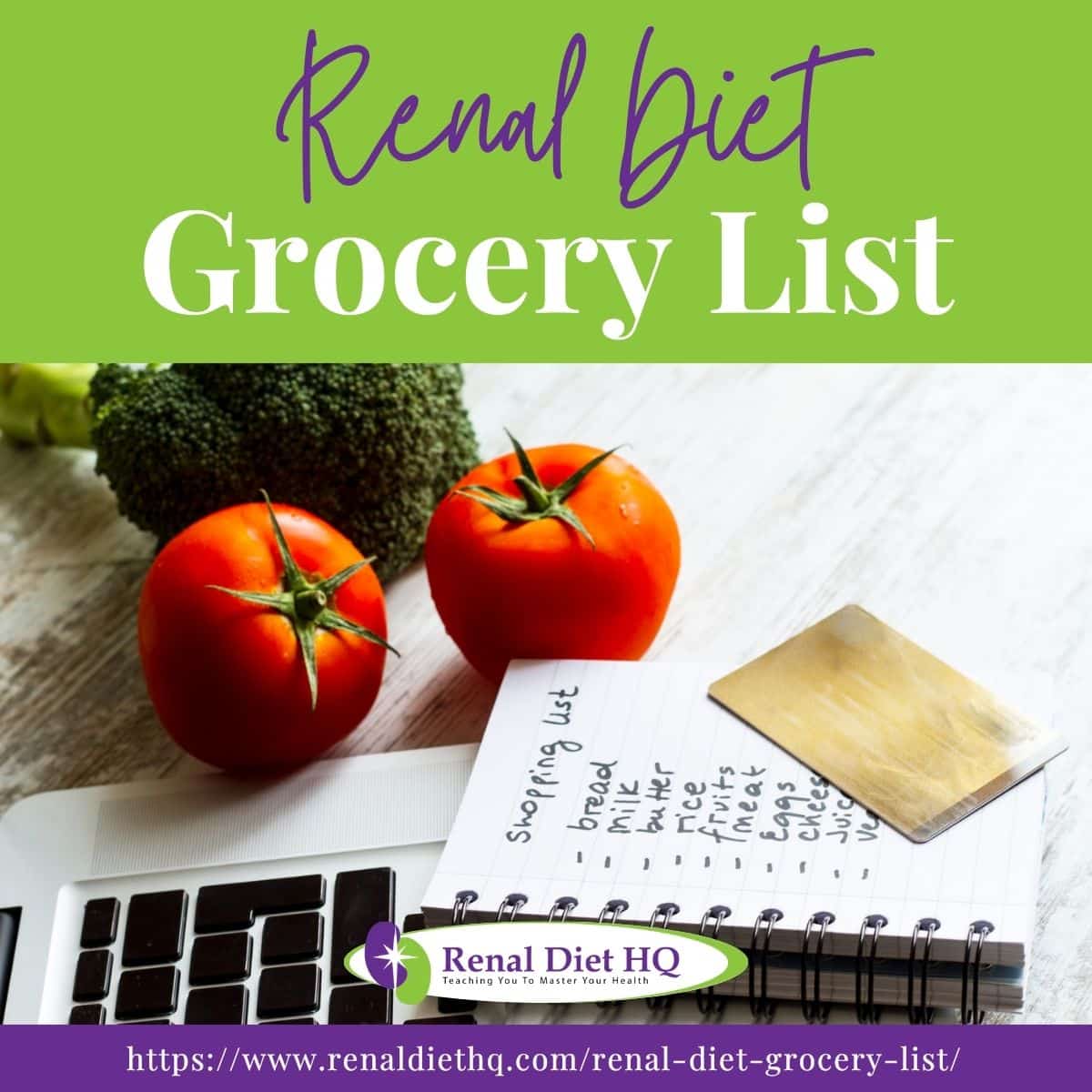
Healthy Protein Sources
You can get healthy animal proteins for your diet by choosing from beef, chicken, fish, lamb, pork, tofu, and turkey. Opt for lean cuts to maximize getting high quality proteins.
For vegetarian options such as beans (like black beans, kidney beans, or bean sprouts) and legumes, nuts and seeds are also a great source of plant-based proteins.
Meal planning is an important part of building a balanced renal diet grocery list that includes the right amount of proteins. Protein portion sizes should be tailored to individual needs with the help of a registered dietitian or nutritionist who specializes in renal diets.
When it comes to meat alternatives like soy-based products or Quorn products, it's important to read labels carefully for added sodium and phosphorus additives.
Amounts of protein required in a diet varies. Modest protein restriction is sometimes recommended for patients at certain stages of kidney disease who are not yet on dialysis.
It is recommended to consume 0.6-0.8 grams of protein per kilogram per day. But this is usually increased for those who are maintained on dialysis. Again, this emphasizes the importance of being guided by a healthcare provider.
Protein supplements may also be beneficial in certain cases, but should only be used with approval from your doctor or healthcare provider.
When shopping for protein items on the renal diet grocery list, remember to check ingredient labels for added ingredients like phosphate or monosodium glutamate (MSG). Phosphate additives are especially high in processed meats, so these should be avoided when following a renal diet.
Additionally, common foods such as canned tuna may contain high levels of mercury, so these should also be consumed sparingly if at all due to their potential health risks.
In order to ensure that you stay on track with your protein requirements while renal diet meal planning, always keep in mind the specific needs associated with chronic kidney disease when making food choices from the grocery store shelves or take-out menus.
Fruits and Vegetables
Stock up on a rainbow of colorful fruits and vegetables to create kidney-friendly meals that are both nourishing and delicious! Apples, berries, lemons, limes, pineapples, plums, and watermelons provide vitamins and minerals while still being considered as low potassium fruits.
Vegetable choices include arugula, beans, bell peppers, broccoli, cabbage, cauliflower, celery, cucumbers, eggplants, leeks, lettuce, mushrooms, onions, radishes, bean sprouts, and squash. If you need an idea for what to make with beans, give this black bean and rice burrito recipe a try!
They're low in potassium but high in other nutrients. However, it is still important to remember to control portions when eating these foods as part of your renal diet meal plan.
Additionally, consider adding fresh snacks like cut vegetables with non-dairy dip; apples with almond butter; or berries topped with yogurt as part of your daily routine.
A well-stocked kitchen full of kidney-friendly choices will make it easier to stick to your renal diet grocery list while maintaining optimal health through balanced meals.
Grains and Dairy
Grains and dairy can provide essential nutrients for a balanced diet without compromising your health. Eating complex carbs like whole grains instead of simple sugars helps control blood sugar levels, while consuming dietary fiber can help reduce cholesterol. Including healthy starches can promote digestion.
Here are some tips for incorporating these foods into a renal diet:
- Is almond milk good for renal diet? Choose non-dairy alternatives such as unsweetened rice or almond milk instead of cow's milk.
- Portion control is key for maintaining optimal health while on a renal diet. Be mindful when adding grains and dairy to your meals and snacks.
- Stock up on healthy grain options (rice, quinoa, corn, wheat-based breads, bagels, crackers, pasta, cereals) that can give you filling meals as well as high dietary fiber
- Those on dialysis with advanced kidney disease or with other fluid restrictions should closely monitor their fluid intake. Cheese should be limited due to its high sodium, phosphorus, and potassium content.
Incorporating whole grains and alternative dairy products ensures you get all the essential nutrients needed for proper body function without putting unnecessary strain on the kidneys.
Planning ahead with portion control helps maintain a healthy weight while sticking to a renal diet plan, ultimately improving overall health!
Processed Foods
Processed foods should be avoided or chosen carefully, as they often contain high levels of sodium, potassium, and phosphorus - three minerals that are detrimental to those with kidney disease.
Phosphate additives, hidden sources of sodium, and unknown amounts of potassium can all pose significant risks of complications among people with kidney disease.
It is important to remember that processed foods usually list the sodium content but not always the potassium content. Additionally, many processed foods contain phosphate additives which can lead to elevated phosphorus levels in those with chronic kidney conditions.
Items to keep off your shopping list include regular canned foods, frozen foods, canned fruits, canned sauces, sugary bottled drinks, and other high sodium foods that are typically processed a lot.
Fortunately, there are alternative options available for those on a renal diet looking for convenience without sacrificing their health. Low-sodium canned vegetables and fruits can provide the same convenience as their processed counterparts while being much lower in salt and other minerals.
Additionally, frozen vegetables are convenient options for meals that require minimal prep time but keep healthy nutrition in mind.
Low-sodium soups or broths are also great choices for a quick meal when cooking from scratch isn't an option. There are plenty of kidney friendly soups and stews to enjoy on this diet.
Lastly, spices and seasonings like garlic powder, onion powder, curry powder, or cumin can add flavor without salt or added sugar.
Healthy eating doesn't have to be boring; it just requires thoughtful meal planning and careful ingredient selection.
Spices and Salt
Spice up your meals with herbs, spices, and seasoning blends to add flavor without the need for salt. Incorporating spices into your cooking offers many health benefits, including fighting inflammation and improving digestion.
For those on a renal diet, using spices can be especially beneficial because they help reduce sodium intake while providing flavorful alternatives to salt.
Spices, herbs, and spice blends can add flavor to meals without adding salt while keeping your dishes and meals healthy and delicious at the same time.
A sheet pan recipe with chicken legs, cauliflower, and red onion sprinkled with tandoori seasoning is an example of a quick, easy, and healthy meal option for a renal diet that maximizes the use of herbs and spices as flavoring, instead of adding more salt.
Sodium intake must be kept at less than 2000 milligrams per day for those with kidney disease. This is helpful to prevent volume overload and maintain fluid balance to avoid swelling and shortness of breath.
Here are some recommendations regarding kidney friendly spices:
- Health Benefits: Spices like cumin, turmeric, ginger, garlic powder, rosemary, oregano, thyme, black pepper and cinnamon contain powerful antioxidants that offer many health benefits such as reducing inflammation and preventing chronic diseases.
- Recommended Spices: These delicious spices also provide great flavor to dishes without adding extra sodium or potassium which is important for those on a renal diet. Herbs such as basil, parsley and dill also make excellent additions to meals.
- Sodium Alternatives & Salt Substitutes: For added flavor without the need for salt try adding citrus juice or zest from lemons or limes; vinegars like balsamic vinegar or red wine vinegar; low-sodium stock; or fresh vegetables like onions and garlic.
Spice blends can also be used as an alternative to salt in recipes – try a sprinkle of garam masala or tandoori seasoning for an exotic twist! Finally there are plenty of flavorful seasoning options available which are specifically designed with lower sodium levels in mind – look out for products labeled 'low-sodium' when shopping.
Another thing is to look make sure to use prepared sauces sparingly when preparing your meals. Worcestershire sauce, BBQ sauces, canned cranberry sauce, and packaged cheese sauce may have a lot of added salt, so it is best to reduce the amount you put in your meals and dishes.
Potassium Balance
Now that you've got a better understanding of spices and salt in relation to the renal diet, it's important to consider potassium balance as part of renal nutrient restrictions. Maintaining the right level of potassium can be tricky for those on a renal diet, as certain foods and medications can cause potassium levels to spike.
For patients with kidney disease, it is recommended to consume less than 3 grams of potassium per day to keep blood potassium levels in a safe range. Otherwise, excess potassium in the blood can lead to consequences such as fatigue, cramps, and irregular heartbeat.
For renal patients, managing potassium intake is crucial to prevent these complications. Including low potassium options in their diet can help prevent hyperkalemia.
Some examples of low potassium foods suitable for renal patients include apples, berries, cabbage, cauliflower, green beans, lettuce, onions, peppers, rice, pasta, bread, lean meats like chicken and turkey, fish, and egg whites.
Additionally, incorporating herbs and spices such as garlic, ginger, oregano, and thyme can enhance flavor without adding excessive potassium.
Monitoring your potassium levels is essential when following a renal diet, so make sure you keep track of them regularly. Ask your doctor or registered dietitian about which tests are best for monitoring your levels as well as how often they should be done.
With the right combination of dietary sources, medication management, and regular testing, keeping balanced potassium levels can be less challenging to do on the daily. It's also important to know diet vs medication for CKD improvement.
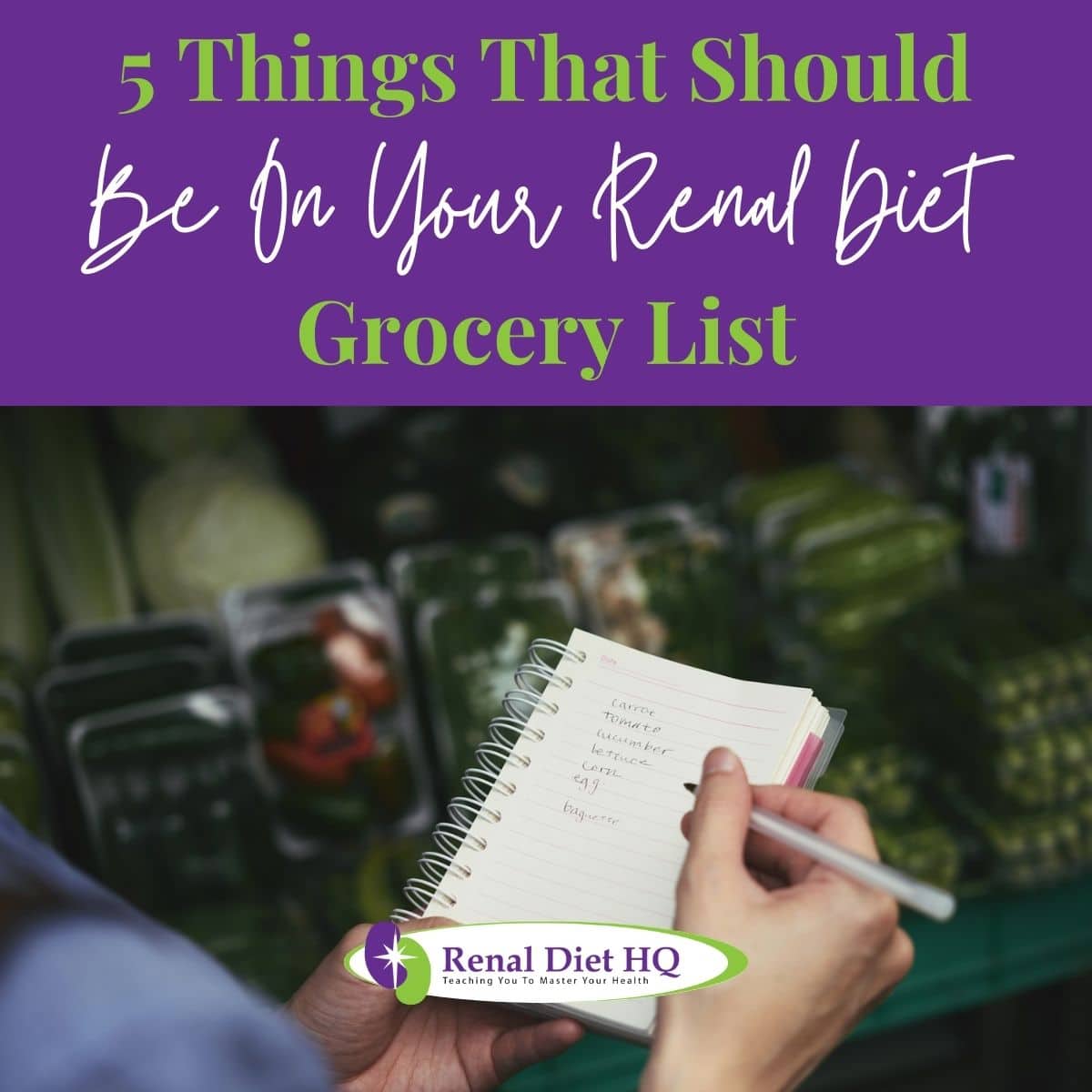
5 Things That Should Be On Your Renal Diet Grocery List
Here’s a quick kidney-friendly food list you can start buying on your next shopping trip (although this will change based on your renal dietitian and your needs):
- Meat/Protein: Beef, Chicken, Eggs, Fish, Lamb, Pork, Tofu, Tuna, Salmon, & Turkey
- Fruits: Apple, Blackberries, Blueberries, Cherries, Cranberries, Grapes, Lemon, Lime, Pineapple, Plum, Raspberries, Strawberries (are strawberries kidney friendly?), Tangerine, & Watermelon
- Vegetables: Arugula, Beans, Bell peppers, Broccoli, Cabbage, Cauliflower, Celery, Cucumber, Eggplant, Leeks, Lettuce, Green beans, Mushrooms, Onions, Radishes, & Squash
- Non-Dairy Substitutes: Unfortified rice milk, unfortified Almond milk, & unfortified Soy milk. Also, non dairy creamer for dialysis patients.
- Grains: Brown rice or wild rice, quinoa, corn, and some whole grain bread products, bagels, crackers, wheat pasta, & bran cereals. White bread is a common choice to add to the diet as well.
We’ve talked a bit about the various kidney friendly fresh foods and grains. Let’s focus, for a minute, on the must haves for a healthy kidney diet. Remember these on your next grocery run!
- Breakfast Cereal: If you eat cereal in the morning, then it’s imperative that you make a healthy choice. Simple cereals that are corn or rice based are a good option. If you prefer hot cereal over cold cereals, then steel cut oats are kidney friendly.
- Dairy Options: Cow’s milk isn’t kidney friendly. And neither are enriched milk alternatives. Rice milk, soy milk, oat milk, cashew milk, coconut milk, and almond milks are good options. Experiment to find the one that tastes best to you. And don’t forget your coffee creamer!
- Snacks: Don’t forget to add snacks to your grocery list. Consider items like granola bars, hard boiled eggs, tuna packets (low sodium), and chopped veggies.
- Kidney Friendly Desserts: While dessert should be something that you eat in moderation, you may want to have something available to make. Something simple like berries or fresh fruit and a non-dairy whip is an easy option. You might also consider non-dairy ice cream or low sugar cookies.
Frequently Asked Questions
When it comes to a renal diet, protein is an important part of your meal plan. The best type of dietary protein for a renal diet depends on your individual lab values, stage of kidney disease, specific health conditions, and medical history.
Chicken or turkey breast, cold water fish like salmon or mackerel, eggs, and tofu are healthy protein options. To make the most of these healthy protein sources, work with a renal dietitian to guide you on your dietary needs.
When it comes to snacking on a renal diet, you don't have to feel like you're missing out. While eating out can be more of a challenge, there are still plenty of delicious and nutritious snacks that fit the bill.
Consider simple things like cut vegetables and a non-dairy dip or apples and almond butter. Are strawberries high in potassium? And berries topped with yogurt are a delicious treat.
So no matter what type of snack you're after for a renal diet, with a bit of careful planning, there's something out there for everyone!
Processed and convenience foods just aren’t good for you. They’re high in sodium and can cause your kidneys to have to work extra hard. So, something like potato chips should just stay off your grocery list.
You also want to avoid salt substitutes like "Nu-Salt". It's really just potassium chloride (read the food label) and will increase the amount of potassium that you consume without you realizing it. You can have spices that are blends of herbs and spices with no added salt to flavor your foods.
Processed meats like salami and hot dogs are other food items that should stay off your list. Dark colored sodas, like colas and diet sodas are not part of your kidney friendly food list. They are high in phosphorus.
Are bananas bad for kidney disease? Avocados and bananas should stay off your list unless you’re only eating a small portion of them.
Finally, avoid dried fruit because it’s high in sugar and potassium levels.
A plant-based diet can provide several benefits for kidney disease patients. It tends to be lower in protein, reducing the strain on the kidneys. Plant-based foods are rich in fiber, antioxidants, and phytochemicals, promoting overall health and reducing inflammation.
Additionally, a plant-based diet (plant based renal diet recipes) is typically lower in sodium and phosphorus, important considerations for kidney disease management.
Emphasizing fruits, vegetables, whole grains, legumes, and healthy fats from plants can support blood pressure control, improve lipid profiles, and enhance insulin sensitivity, aiding in kidney disease management and reducing complications.
To keep nutrient levels of phosphorus in a normal range while following a renal diet, consider these strategies. Choose low phosphorus foods such as fresh fruits and vegetables, rice, pasta, and bread. Limit or avoid high-phosphorus foods like dairy products, nuts, seeds, and processed meats.
Opt for cooking methods that leach out phosphorus, like soaking and boiling beans, and choose low-phosphorus alternatives for dairy, such as almond milk, oat milk, or rice milk.
Read food labels for phosphorus additives (phos), and consult a registered dietitian for personalized guidance on managing phosphorus intake while maintaining a balanced renal diet.
Get On Track With Your Renal Diet, Starting With A Kidney Friendly Grocery List
It’s time to get to the grocery store, now that you understand what you need on your renal diet grocery list of foods!
Consider how you want to approach making your kidney friendly food list. Are you going to make a meal plan or stock your kitchen? Don't forget to stock up on kitchen tools and equipment.
Don’t forget dairy alternatives, snacks, and breakfast options. Stick to whole foods that are going to be naturally low in sodium.
Being on a renal friendly diet requires attention, however it offers a wealth of options. You won’t likely feel deprived or restricted.






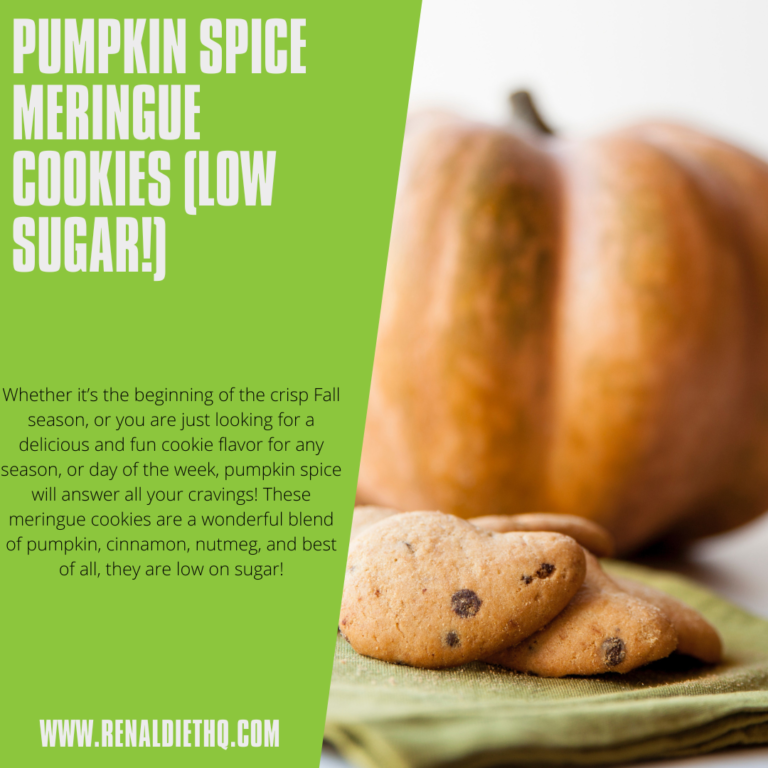
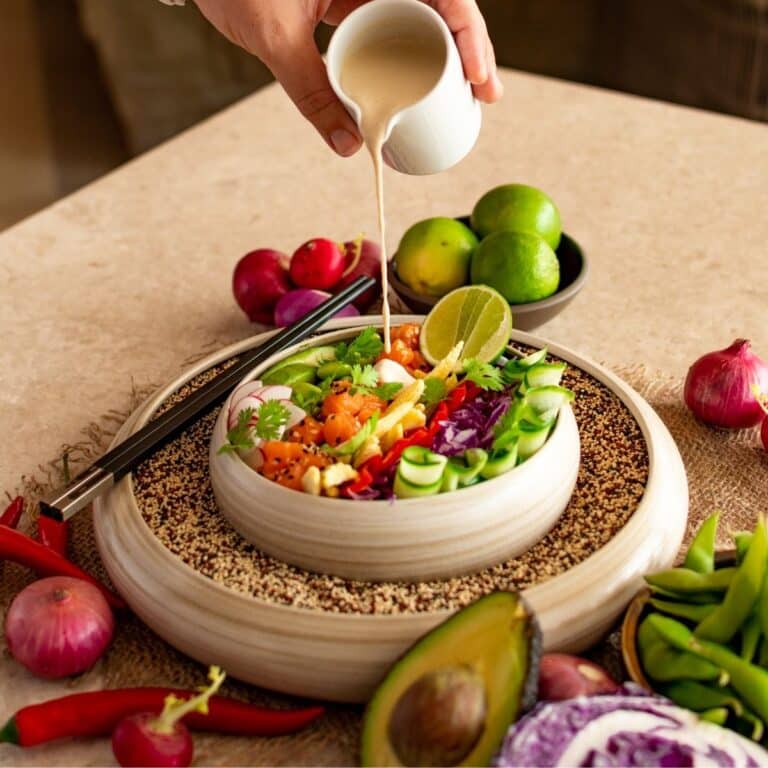
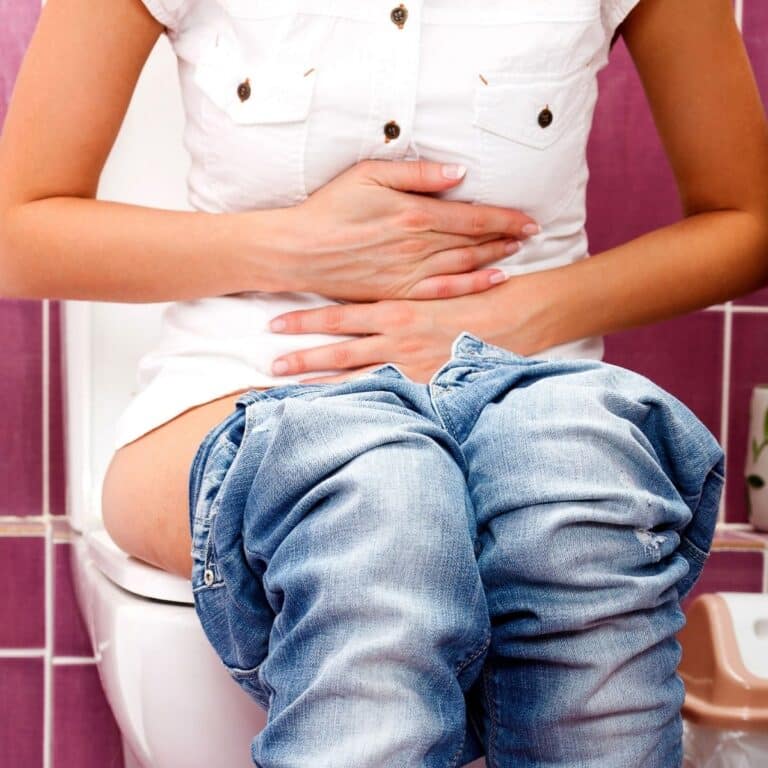
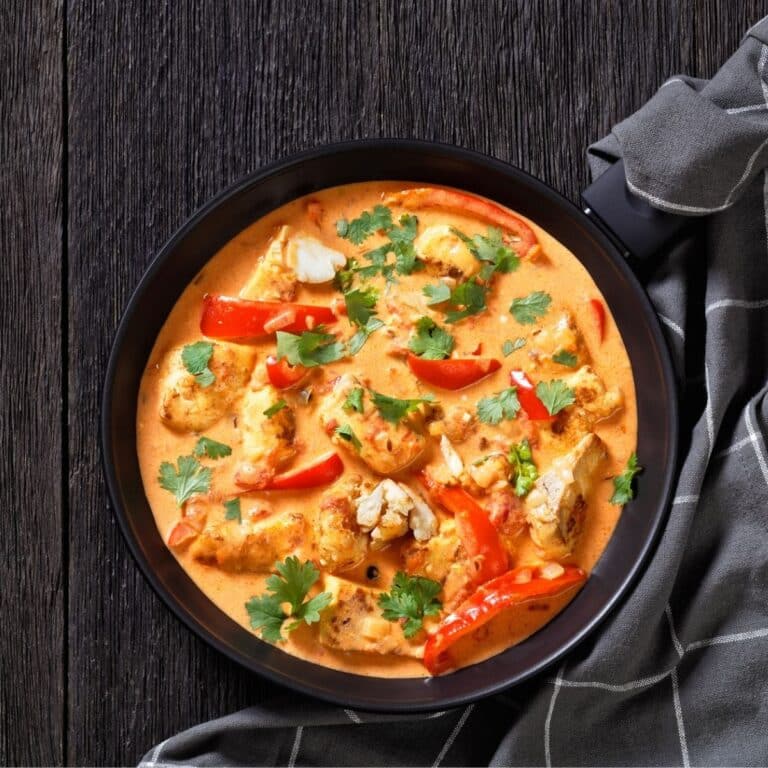
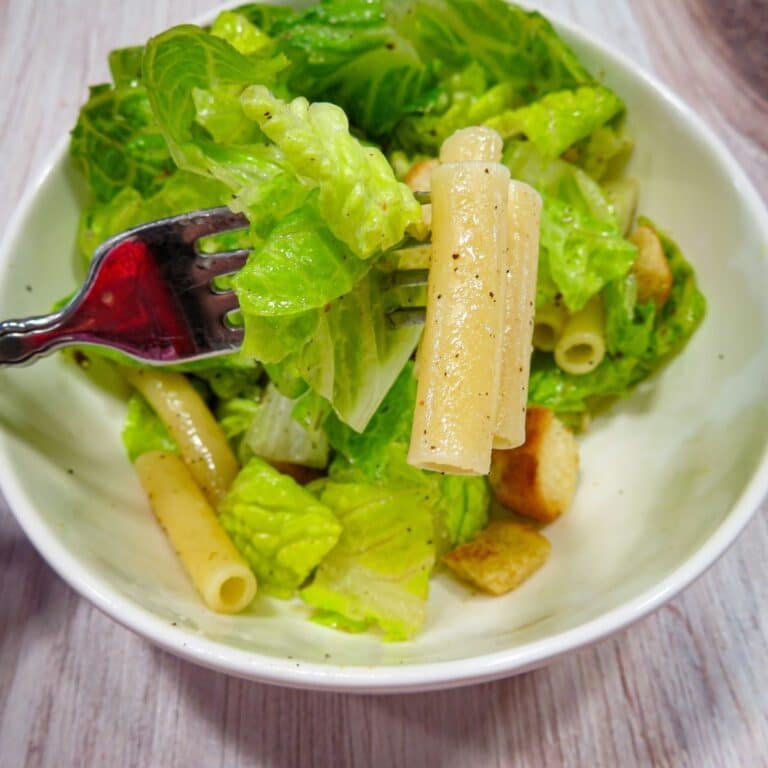

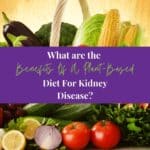


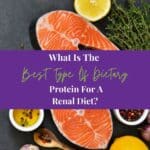
The information complied here is comprehensive, user friendly and easily executed. Thank _ You. K. Amadasun, MSN ED RN.
Thanks for the list of foods that I should have. Will help me plan my meals for the week
Wonderful report. Thank you so so much… I am Stage 3b
A question…. I have been on Losartan for at least 30 years. WhY do you say they finally took your Dad off it…is it bad fo kidney? You do not mention sugars. Are they a no no?
.
You should always talk to your doctor about medical / medicine changes.
My potassium is usually low what should I eat to ensure I have the right amount of potassium